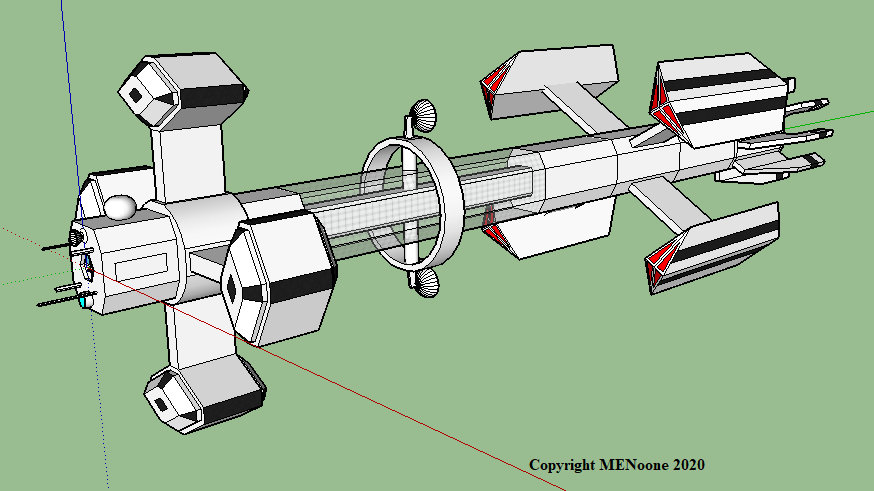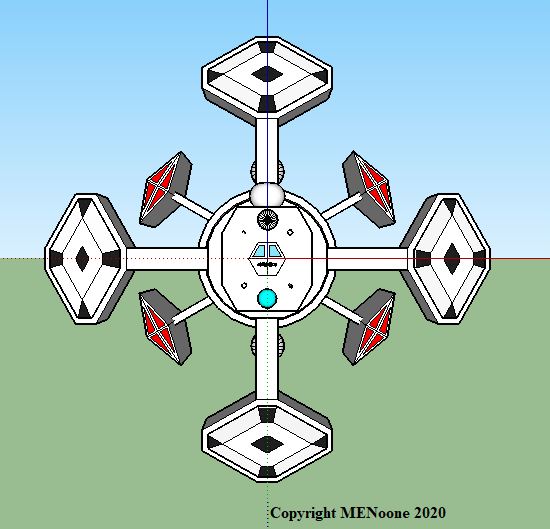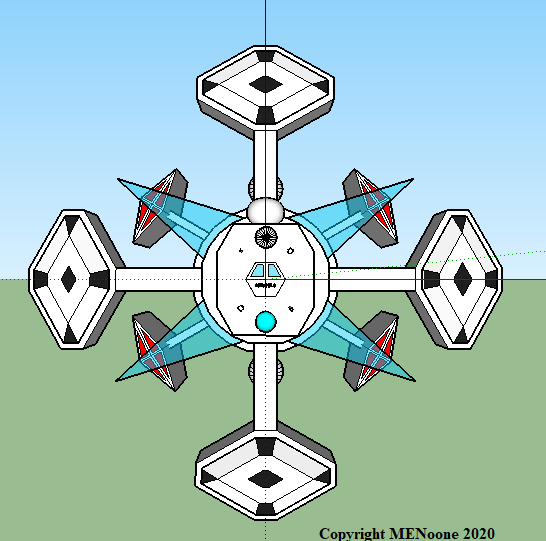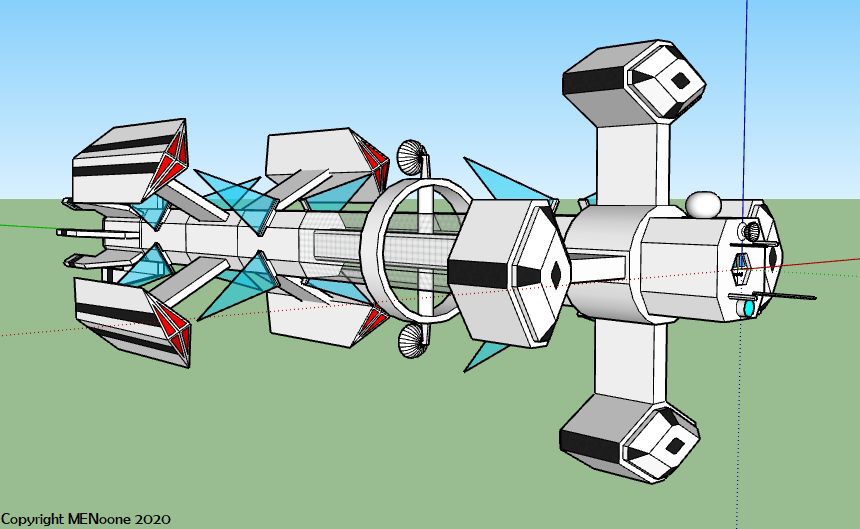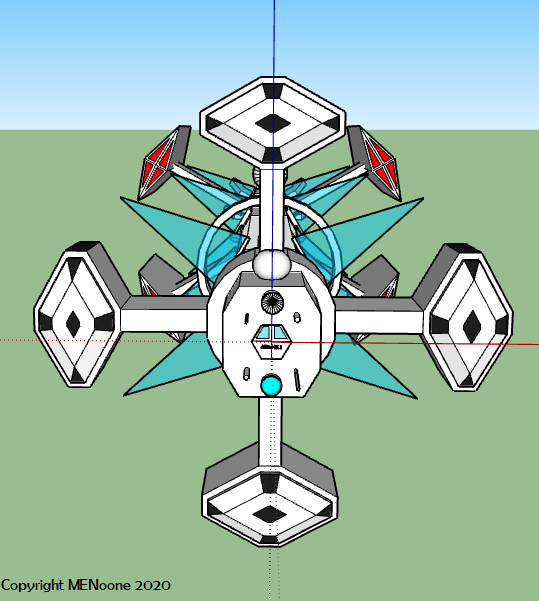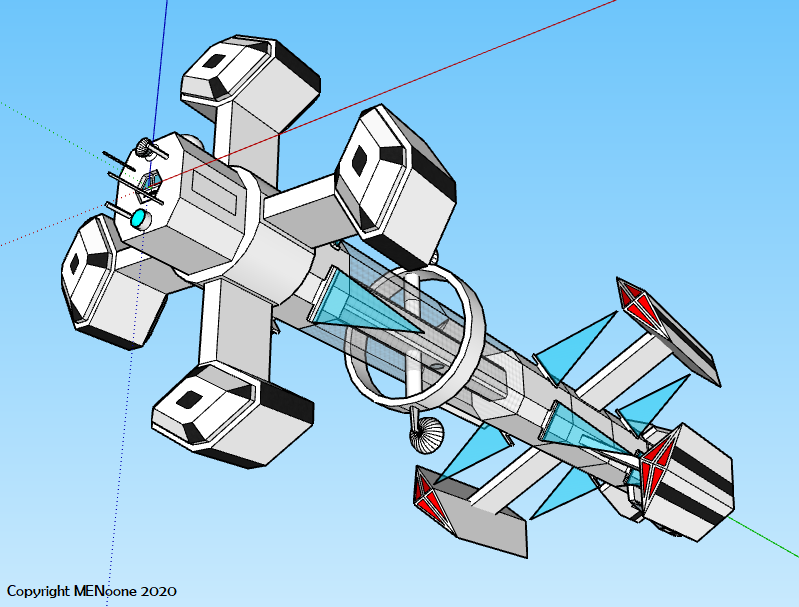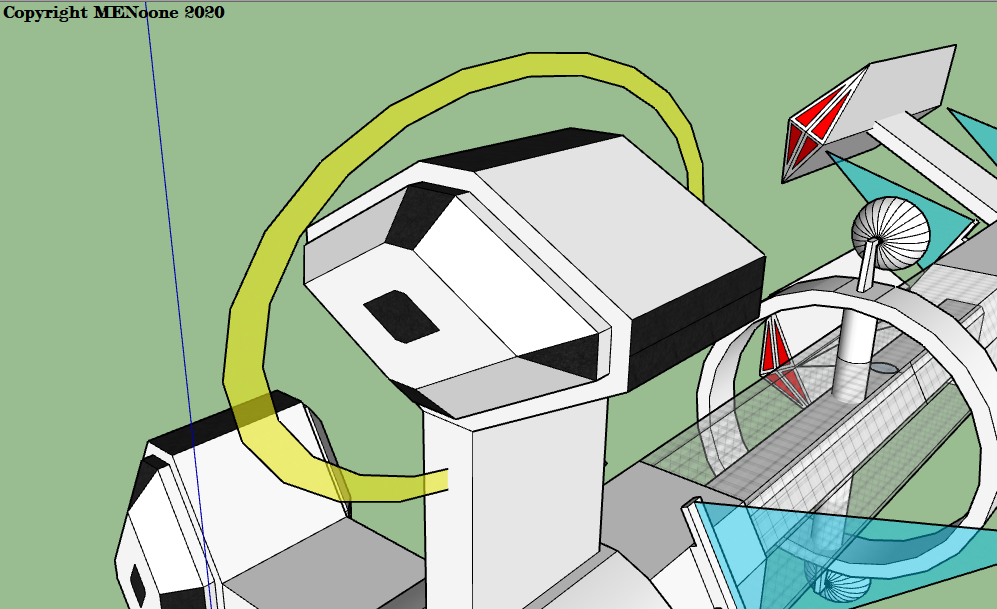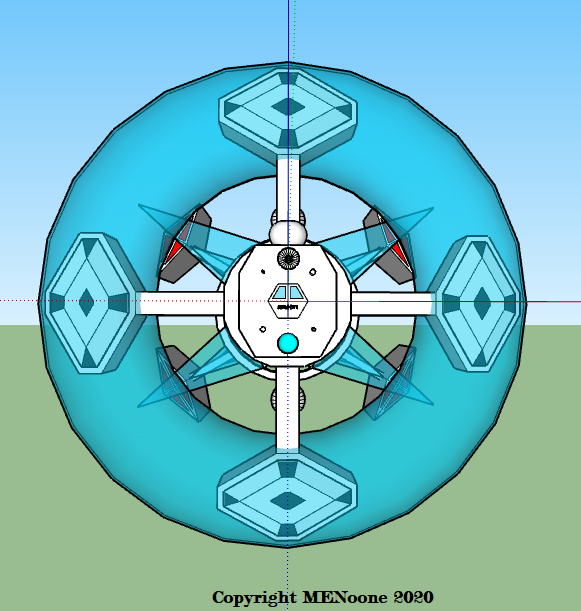-
Welcome! The TrekBBS is the number one place to chat about Star Trek with like-minded fans.
If you are not already a member then please register an account and join in the discussion!
You are using an out of date browser. It may not display this or other websites correctly.
You should upgrade or use an alternative browser.
You should upgrade or use an alternative browser.
Warp Ship with rotational gravity
- Thread starter Tarek71
- Start date
Maybe the warp bubble of distorted space can protect the ship while sub-light, too?
Possibly. I could just put up the deflector dish as later ships have, but I would prefer it if they have to make do without that. I am assuming they have an electromagnetic shield for radiation. Still looking into how that would be configured. There is a toroidal version that might work will with a rotational section. Passive, hard shielding is what I am thinking now for dust and other small particles. Layered whipple shielding? These could be made more effective with advances in materials science. Maybe some early version of the polarized hull is operating as well.
With no deflector technology, the ship might need a dust shield like a big umbrella in front of the ship.
Yes, I am working on that end. Im looking at different ways of solving that problem.
Maybe the warp bubble of distorted space can protect the ship while sub-light, too?
Possibly. I could just put up the deflector dish as later ships have, but I would prefer it if they have to make do without that. I am assuming they have an electromagnetic shield for radiation. Still looking into how that would be configured. There is a toroidal version that might work will with a rotational section. Passive, hard shielding is what I am thinking now for dust and other small particles. Layered whipple shielding? These could be made more effective with advances in materials science. Maybe some early version of the polarized hull is operating as well.
My thought is that "navigational deflectors" aren't really necessary to protect a ship during warp travel. After all, if the ship isn't technically moving then neither would any space dust near the ship be moving. So many ships in the Star Trek universe don't have "navigational deflectors" that I think they really aren't used for the purpose people think they are.
That could be. I am not clear myself on the mechanics of the warp field in that context. Does it protect the ship from radiation and debris? Some things, like light and the ships own sensors penetrate while the ship is at warp. What gets through and what does not isnt clear to me. At the very least, while not at warp, I would say hard passive shielding for debris and active electro magnetic shield for solar radiation and cosmic rays, backed up by hard shielding.
You would want radiators on the hottest sections, so large wing like ones on the engine and smaller ones on the habitat modules, though those could have radiators flush to the hull. Radiators on the warp engines would make sense too.
Thanks! Coming along. Radiators change the lines of it, but I wanted to limit the handwavium where possible. Still working on the active shielding issue. The one I was leaning toward would need a complete torus encasing the habitat ring section. We'll see how that can look. This is a graphic from a proposal to the NASA Innovative Advanced Concepts program.
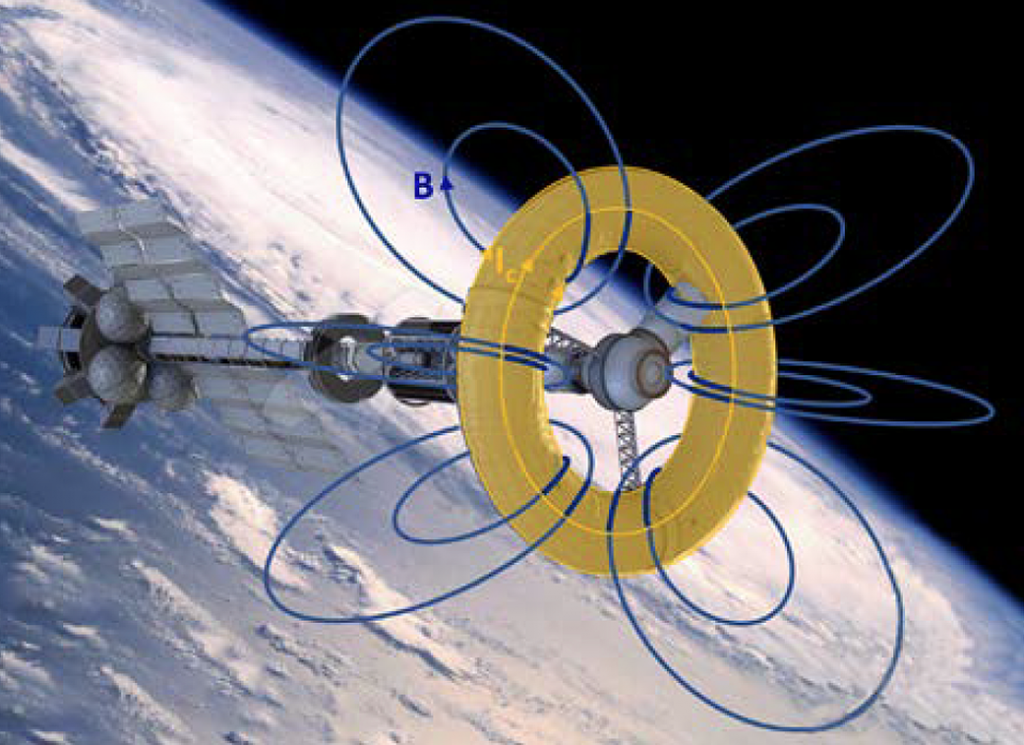

Shielding for general flight safety or something specific? I think you could generate a plasma ring ahead of the habitat ring, or ahead and behind, and if its field is strong enough it would overlap the hab section. Although I'm basing this off of aerobraking schemes.
https://www.nasa.gov/offices/oct/early_stage_innovation/niac/2012_phase_I_fellows_kirtley.html
https://www.nextbigfuture.com/2020/...-would-enable-39-day-mars-crewed-flights.html
For something specific or real check this section from Atomic Rockets.
https://www.nasa.gov/offices/oct/early_stage_innovation/niac/2012_phase_I_fellows_kirtley.html
https://www.nextbigfuture.com/2020/...-would-enable-39-day-mars-crewed-flights.html
For something specific or real check this section from Atomic Rockets.
There are a lot of rival ideas about how to provide active shielding against radiation and cosmic rays. Passive shielding is a physical barrier. They can be very effective but can add significantly to the ships mass. The active shield ideas include plasma, but also electrostatic and magnetic. I am going with some passive shielding, but also an active magnetic shield. Specifically the "Magnetospheric Dipolar Torus" design of John Slough. The main habitat exists inside the torus and provides 360 degree protection. This has a benefit of potentially working well with rotational gravity for habitat modules.
Space Odyssey: Voyage to the Planets....
The spaceship Pegasus was long/spindly. The ship included a rotating structure, with two habitat modules, each at opposite ends of this structure.
2001: A Space Odyssey
The Discovery 1 has been describe as a dumbbell. At opposite ends of a long boom are, respectively, the habitat, and the reactor/engine assembly. An internal centrifuge was located inside the spherical habitat.
As I recall, distance can mitigate the effects of radiation. Hence the boom separates the habitat from the reactor/engine assembly.
Interstellar
The habitat modules of the Endurance are arranged in a ring, almost like the beads of a necklace.
Robinson Crusoe on Mars
The spaceship-the Elenor M-had something like a triangular fin at the aft end of the craft. Reminds me of the vertical stabilizer on some jet planes. But I suspect it was actually a radiator.
Red Planet
The Mars ship had an interesting appearance, including rotating torus and panel like structures.
Some of the tech was un-Trek like but cool, such as a dog like robot which could dispatch a helicopter drone.
Alien
When the ship's sublight engines were used in space, the visual effect was similar to that of the Enterprise impulse engines in TMP.
The current project seems to be to design a hybrid-essentially an interplanetary ship, with a very early version of a warp drive.
What I meant to convey with this post is that people designed some very interesting interplanetary ships using projected technology. And, of course, we have seen some very interesting starships.
This hybrid design is also quite interesting. I imagine it as part of a design lineage that includes expeditions to Mars.
The spaceship Pegasus was long/spindly. The ship included a rotating structure, with two habitat modules, each at opposite ends of this structure.
2001: A Space Odyssey
The Discovery 1 has been describe as a dumbbell. At opposite ends of a long boom are, respectively, the habitat, and the reactor/engine assembly. An internal centrifuge was located inside the spherical habitat.
As I recall, distance can mitigate the effects of radiation. Hence the boom separates the habitat from the reactor/engine assembly.
Interstellar
The habitat modules of the Endurance are arranged in a ring, almost like the beads of a necklace.
Robinson Crusoe on Mars
The spaceship-the Elenor M-had something like a triangular fin at the aft end of the craft. Reminds me of the vertical stabilizer on some jet planes. But I suspect it was actually a radiator.
Red Planet
The Mars ship had an interesting appearance, including rotating torus and panel like structures.
Some of the tech was un-Trek like but cool, such as a dog like robot which could dispatch a helicopter drone.
Alien
When the ship's sublight engines were used in space, the visual effect was similar to that of the Enterprise impulse engines in TMP.
The current project seems to be to design a hybrid-essentially an interplanetary ship, with a very early version of a warp drive.
What I meant to convey with this post is that people designed some very interesting interplanetary ships using projected technology. And, of course, we have seen some very interesting starships.
This hybrid design is also quite interesting. I imagine it as part of a design lineage that includes expeditions to Mars.
Last edited:
The objective of Project Daedalus was to design a probe for a fly by of Barnard's Star.I recognise that magnetic nozzle design - nice! I've always been partial to the look of the British Interplanetary Society's Daedalus propulsion system. Either would make a great pre-impulse sublight drive.
BTW, I wouldn't be surprised if the ship had a grappler (ENT) instead of a tractor beam.
Last edited:
Issues related to the current Apocalypse and other matters sidetracked me for several weeks, but work has resumed.
Ok, so here is the basic idea, although the shape is wrong. This is a retractable donut shaped shell that extends around the rotational section for added protection from radiation and cosmic rays.

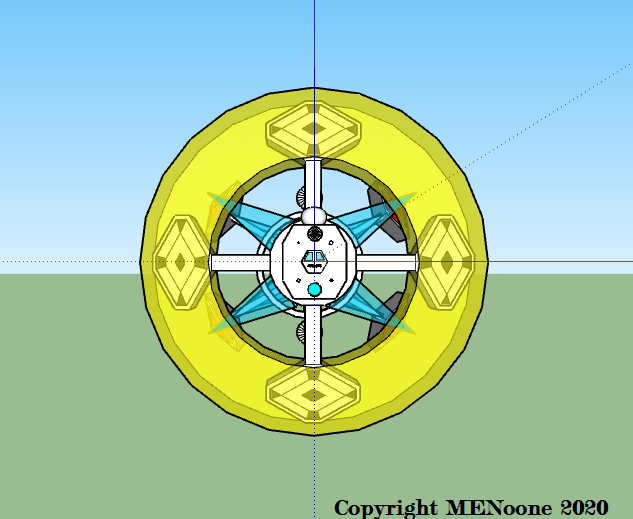

Ok, so here is the basic idea, although the shape is wrong. This is a retractable donut shaped shell that extends around the rotational section for added protection from radiation and cosmic rays.



Similar threads
- Replies
- 25
- Views
- 2K
- Replies
- 0
- Views
- 139
- Replies
- 0
- Views
- 564
If you are not already a member then please register an account and join in the discussion!


